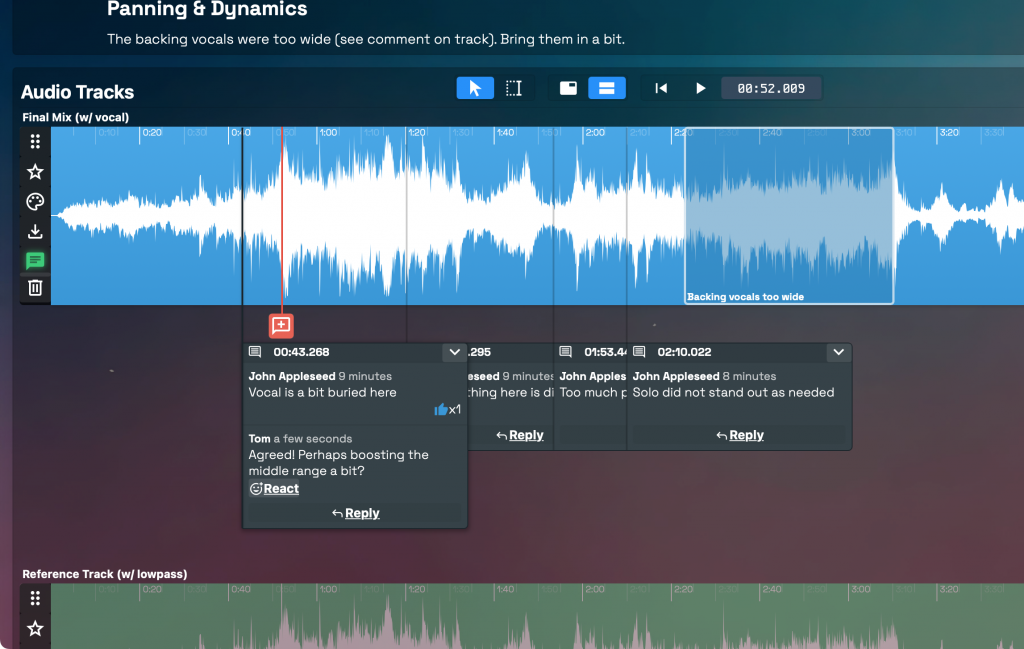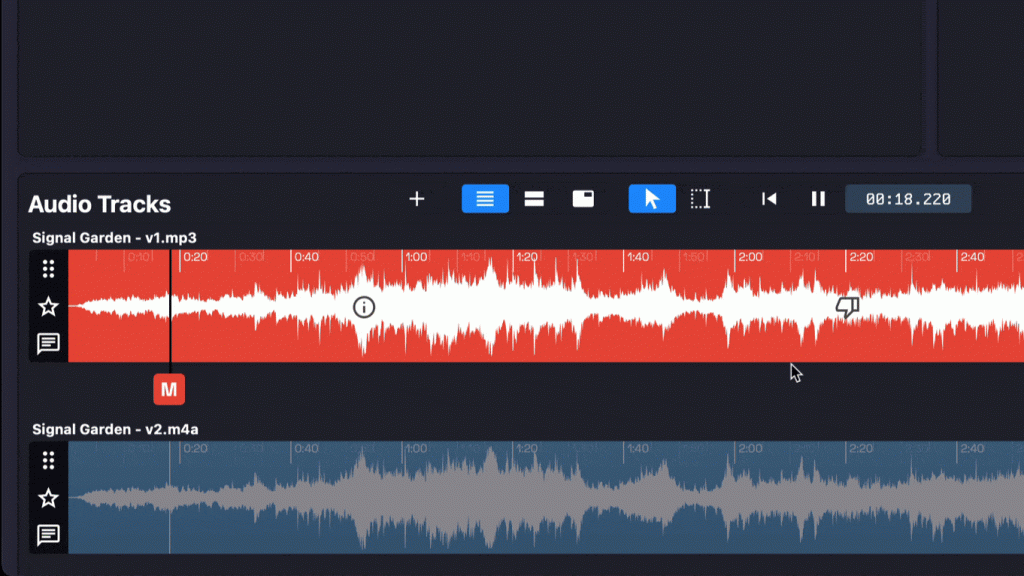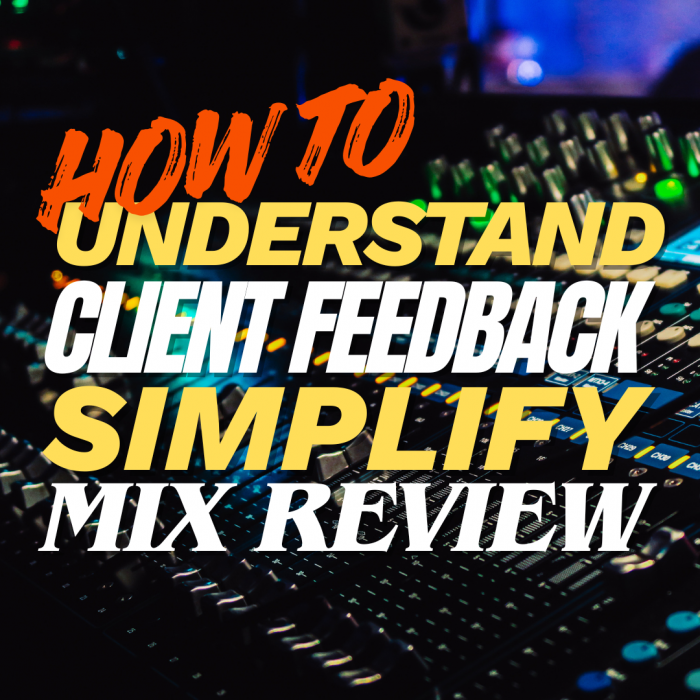Understanding Client Feedback During a Mix Project — and How Opusonix Makes It Easier
Table of Contents
Mix engineers know that communication can make or break a project. A mix that sounds perfect to you might not match what your client imagined — and the way feedback is given (and received) can make all the difference between frustration and collaboration.
Two excellent articles in Sound On Sound — Neil Rogers’ Understanding Client Feedback and Dom Morley’s Mix Management — dive deep into the art of interpreting feedback and structuring your workflow. Building on their insights, let’s explore how to handle feedback more effectively — and how Opusonix can help you manage mix feedback clearly while improving the way you collaborate on audio projects.
1. Translate, Don’t React
As Neil Rogers points out, feedback like “make it warmer” or “it needs more punch” is rarely technical — it’s emotional. The engineer’s job is to translate those feelings into mix decisions. Don’t rush to boost 200 Hz or add compression right away. Ask follow-up questions, or play examples that help narrow down what the client means.
In Opusonix, you can keep these clarifying notes inside the project itself. The Notes pod records who said what, automatically labeling each contribution. This creates a conversational, living document that captures the evolving creative intent — no more digging through email threads.

2. Keep Feedback Timestamped and Threaded
One of the biggest frustrations in mix feedback is vague time references: “At the start of the second chorus, the guitars feel off” — but which version? Which second chorus?
A professional mix review workflow system should let you and your client add timestamped comments directly in the audio timeline. Even better, those comments should be able to receive responses and reactions, keeping discussions precisely tied to their context.
In Opusonix, that’s exactly how it works. You and your clients can drop timestamped markers with comments, reply to them, and react with emoji-style responses. Each comment becomes its own discussion thread, keeping feedback specific and actionable. You can even mark comments as “completed” or minimize them to keep your workspace organized — perfect when notes start piling up.

3. Compare Revisions Side by Side
Dom Morley emphasizes that “mix management” is as much about organization as it is about sound. When you’re juggling multiple versions — V1, V2, V3-final-final — clarity matters.
When a new revision is ready, don’t just replace the old one. Put them side by side. Highlight the changes and make sure everyone can hear the difference.
In Opusonix, you can simply upload the new mix revision, then use regions and markers to show what changed. Clients can instantly A/B test between revisions, helping both sides confirm whether feedback has been successfully addressed. This structured mix review workflow avoids endless “did you fix that part?” confusion and speeds up approval.

4. Keep “Global Notes” Structured and Transparent
Feedback isn’t always pinpointed to a moment in time. Sometimes it’s broad: “The vocal should sit a little more forward,” or “The bass needs more presence overall.”
For this type of feedback, use a shared note area that evolves as the project does. In Opusonix, the Notes pod acts like a chat log for the project — everyone’s comments are automatically labeled, so there’s no ambiguity about who said what or when. You can keep track of evolving discussions like “bass too heavy?” over multiple versions and easily see how the mix has changed in response.
5. Capture the Client’s Vision Early
Before the first mix revision even starts, talk about what your client actually wants. As Neil Rogers advises, you should “discuss what success sounds like” before touching any faders.
Use the Notes pod in Opusonix to jot down client goals, musical references, or descriptive phrases. Having those notes visible throughout the project helps both sides stay aligned — especially when deadlines get tight.
6. Listen to the Rough Mix Together
One of Dom Morley’s best tips is to listen to the client’s own rough mix — ideally with them present. It’s often full of clues about what they value most: maybe their rough has the vocals pushed up high because that’s what feels right to them.
In Opusonix, you can drop that rough mix into the project and use the M key to quickly add markers or create regions as you listen. Both you and your client can point out moments worth keeping or improving, capturing real-time insight as shared, timestamped comments. This makes it easy to collaborate on audio projects in real time, remotely, or even asynchronously.

Wrapping Up
Good communication isn’t just about hearing — it’s about understanding. When feedback is clear, contextual, and easy to follow, mix projects move faster and clients feel more confident in the results. Tools like Opusonix make that understanding visible and structured, turning what used to be a messy exchange of emails and notes into a focused creative dialogue.
By combining the insights from Neil Rogers’ Understanding Client Feedback and Dom Morley’s Mix Management with the collaborative features built into Opusonix, you can transform the feedback process into a smooth, musical workflow that keeps everyone on the same page.
If you haven’t tried Opusonix yet, now’s a great time to experience how it can simplify your next mix project. Upload your first mix, invite your client, and see how timestamped comments, threaded discussions, and audio file A/B testing can help you manage mix feedback effortlessly and bring clarity to every revision.
